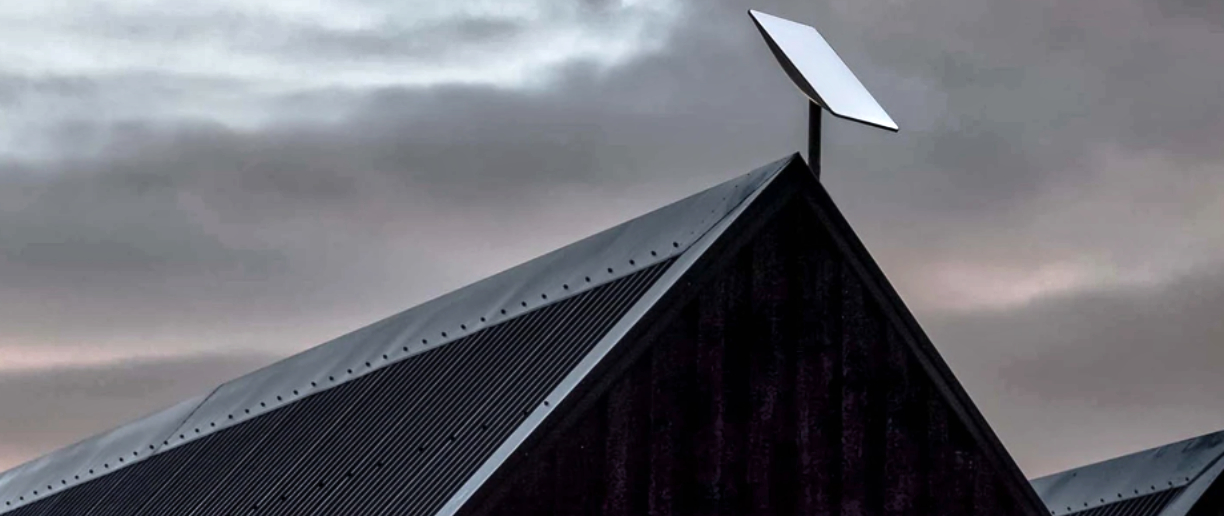A recent report from TMF Associates and CEO Tim Farrar is blunt, and rare amongst analysts in admitting he has now changed his mind about SpaceX’s prospects. Until 2020, TMF was skeptical about any of the many LEO broadband-by-satellite operations and questioned whether any of the planned schemes would ultimately be successful.


Tim Farrar
TMF’s analysis was fully justified in that LeoSat failed in late 2019, OneWeb hit bankruptcy in March of 2020, and even SpaceX’s Starlink had uttered what TMF described at the time as “widely over-ambitious forecasts” of reaching $6 billion in revenues last year and reaching $30 billion by 2025.
TMF now admits has has had a change of view, saying that Musk’s Starlink has launched broadband services and “provided vastly more capacity per subscriber than Viasat and Hughes.”TMF quotes the 400,000 subs on Starlinks books by June of 2022.
“We now know that Starlink had achieved 700,000 subs by the end of September.
That growth is impressive. In March of this year, Starlink claimed 250,000 users. By May, that had expanded to 400,000. By June of this year, the business claimed 500,000 users and that grew to 700,000 by early September.”
These latest numbers come from SpaceX’s VP of Commercial Sales, Jonathan Hofeller, who told delegates at the recent Euroconsult World Satellite Business Week that its Starlink system had achieved the registration of some 700,000 subscribers. He added that recent subscriber price reductions are further boosting the company’s subscriber numbers.
Those price reductions are designed to achieve closer parity with Starlink’s US pricing. The discounts have — in some markets — been dramatic. Brazil, for example, has seen a reduction of almost 50 percent.

Elon Musk, in one of his famous Tweets, said that SpaceX has now manufactured more than 1 million Starlink user terminals. Indeed, this suggests that this coming winter will likely see Starlink with 1 million subs.
As the Starlink fleet has expanded its territorial coverage, so other countries and territories have been added to its coverage footprint. The company has also signed a contract with international satellite service provider Speedcast — that firm will use the Starlink kits to serve the enterprise and maritime markets.
Since Starlink’s Maritime service went live, Speedcast has supported customer trials to demonstrate the capabilities of Starlink as part of a seamlessly, integrated service. Earlier this year, Speedcast integrated Starlink as part of a comprehensive communications solution, making 100% uptime a reality with hybrid connectivity via next-generation SD-WAN.
The successful sea trial for the world’s largest expedition cruise company is just one example wherein Speedcast is integrating multiple connectivity paths to deliver ubiquitous connectivity for customers, noted Speedcast. Starlink now claims more than 40 nations and territories served from its portfolio of more than 3,000 satellites. That number is being added to at a rate, typically, of more than 100 satellites per month.
There have been problems, however, and India is a case in point. Despite early successes in winning some 5,000 early adopters, it seemed that Starlink hasn’t quite fulfilled the official bureaucratic documentation and license applications needed to be active in the country. India’s Department of Telecommunications warned users not to sign up for Starlink and told the company to cease activity in the country. That glitch led to Starlink’s local Director (Sanjay Bhargava) stepping down (in December of 2021) after just four months into the job.
India’s secretary for telecommunications, Kalyanaraman Rajaraman, said in October that Indian users will likely be able to access satellite-based broadband connectivity by the middle of 2023.
The department of telecommunications has already sent its reference to the Telecom Regulatory Authority of India (TRAI) to auction the spectrum in the 27.5-28.5 MHz band, which is essential to rollout satellite broadband services.
“We are waiting for TRAI to send their recommendations on the satellite spectrum band to be put on auction,” Rajaraman said at India’s Mobile Congress event. “We expect the process to complete in about nine to ten months.”
Musk also opened up a Starlink service for Iran (and promptly suffered a ban from the Iranian authorities). But a highly discreet antenna dish and the entrepreneurial spirit of many Iranians will likely see subscriber numbers achieved.
For subscribers, especially in poorly served regions, the growth in the number of satellites has meant better service and faster connectivity. According to a report from speedtest specialists Ookla, median download speeds for Starlink dramatically increased between the first quarter of 2021 and 2022 — the service’s speeds saw a 38% increase in the US and in Canada and speeds increased by nearly 58 % in the same time period. In the US, Starlink users can expect to obtain speeds around 90.55 Mb/s, while Canadian users should see speeds close to 97.40
Mb/s. Ookla said that, for example, Starlink’s service in Mexico (in Q1/2023) was the “fastest satellite provider in North America.”
Starlink — during Q1/2022 — was fastest for download speed in Lithuania at 160.08 Mb/s, followed by Belgium (147.85 Mb/s), Slovakia (146.25 Mb/s), Croatia (136.00 Mb/s), and Austria (132.61 Mb/s). Spain was the only country to have its fixed broadband best Starlink for fastest median download speed, achieving 131.99 Mb/s to Starlink’s 108.43 Mb/s within the country.
However, there are also negative reports that suggest that as more users sign up then — inevitably — Starlink network congestion will occur. Starlink’s median download speeds in the US dropped from 90.6Mb/s to 62.5Mb/s between the first and second quarters of 2022, according to more recent Ookla speed tests.
Starlink launched another 52 craft on October 27th from Vandenberg SFB and is targeting an initial 4, 000 satellites and building that number to 12,000 and to even as many as 42,000 over time — that will certainly further improve access and connectivity speeds for users. The firm has also announced a Flat High Performance Starlink and Standard Starlink products for RV’ers.
“Successfully developing such a system is an extraordinary technical feat when so many previous broadband constellation plans have failed. And after raising over $6 billion in the last 2.5 years at ever increasing valuations, SpaceX has been able to launch thousands of Starlink satellites and build scale that competitors will struggle to match,” says TMF.
Indeed, TMF goes further and says that Starlink is still being treated as if it will not damage other parts of the satellite market.
“However, the dam is starting to break for acceptance of Starlink amongst professional users, with Royal Caribbean’s recent move to deploy Starlink representing just the start of disruption in traditional satellite verticals. And SpaceX’s latest $2 billion in equity funding should see the company through to late 2023, by which time I expect Starlink to have captured around 1 million users and have reached cash flow break even (even accounting for ongoing satellite replenishment costs),” said Tim Farrar.
SES, which already holds a multi-year contract with Royal Caribbean, said the Starlink deal does not affect their position, nor prospects. SES CEO, Steve Collar, also speaking at the Euroconsult World Satellite Business Week, stressed that SES still has its satellites serving Royal Caribbean, and will continue to have a role with Royal Caribbean and most other giant cruise ships.

Steve Collar
Collar said that SES was serving the liners with the satellite equivalent of a dedicated fiber service, whereas others were simply providing their “best effort” and “contended service” not dissimilar to that provided to a consumer’s home. Collar estimated that SES delivers about half of Royal Caribbean’s current satellite services. “Starlink,” he said, is “not the same service that we deliver. I think what [they, Royal and Starlink] are looking to do is create a sort of thin layer of connectivity that they can use for all ships, and then have additional services onboard the largest ships that need the high throughput and guaranteed connectivity. I’m not sure that, architecturally, SpaceX can deliver a non-contended service — I think their whole thing is effectively a ‘best effort’ service.”
However, the deal for Starlink represents good news and perhaps adds unexpected revenues to the overall Starlink revenue stream. It is the same with Starlink’s bid for a slice of the airline ‘direct to seat’ business. Just about every major satellite operator is either supplying, or bidding for, In Flight Connectivity (IFC) business. There’s seems to be no reason why Starlink shouldn’t win a slice of this market segment.
Farrar believes that Starlink can now tap into a virtuous circle where more satellites mean more capacity for speedier sky-scanning for users and thus lower power levels for user terminals.
“We’re in a position where Starlink has clearly won the race for LEO broadband (at least for the next 4-5 years, as Amazon’s Kuiper won’t be completed before 2026-27), and is likely to become the largest satellite operator by revenue within that timeframe,” says TMF.
Farrar’s team does warn that, while Starlink, helped by Musk’s billions, might well dominate for the next few years, it can also prompt industry consolidation and potentially bankruptcies for those who will be unsuccessful in this huge market segment.

Chris Forrester
Author Chris Forrester is a well-known broadcasting journalist, industry consultant and Senior Columnist for SatNews Publishers. He reports on all aspects of broadcasting with special emphasis on content, the business of television and emerging applications. He founded Rapid TV News and has edited Interspace and its successor Inside Satellite TV since 1996. He also files for Advanced- Television.com. In November of 1998, Chris was appointed an Associate (professor) of the prestigious Adham Center for Television Journalism, part of the American University in Cairo (AUC), in Journalism, part of the American University in Cairo (AUC), inmrecognition of his extensive coverage of the Arab media market.

